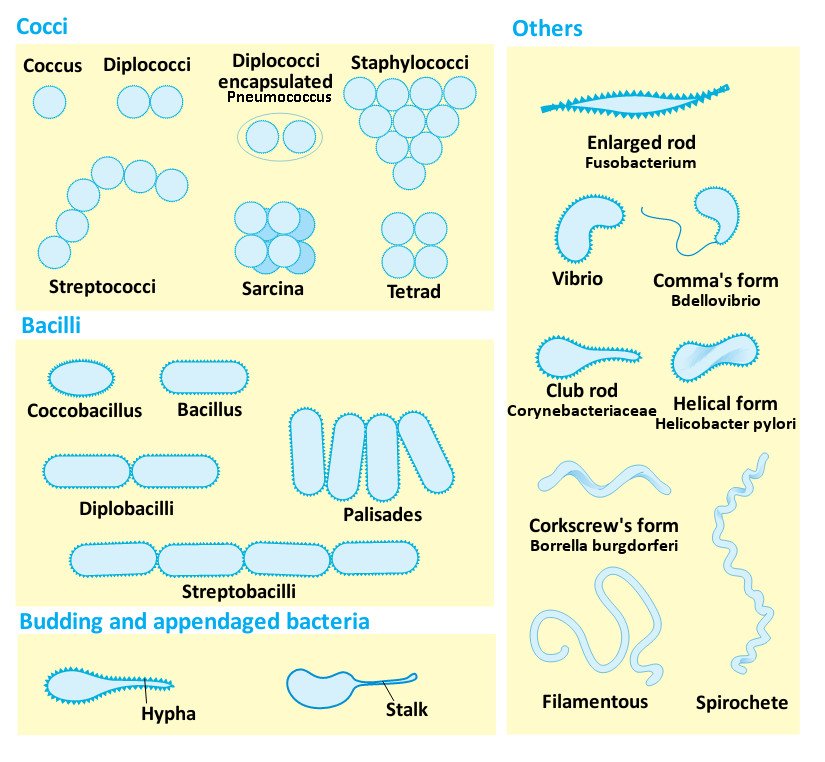
#BACTERIA SHAPES SKIN#
Cocci are spherical-shaped bacteria Staphylococcus aureus which cause skin infections are a typical example of cocci.Enter the correct letter from Column B in the answer blanks. Spirilli are spiral-shaped bacteria Helicobacter pylori which cause gastric ulcers are a typical example of spirilli Transcribed image text: Chapter 2: Medical Microbiology Additional Activities Matching: Bacterial Shapes Match the term in Column B to the appropriate description provided in Column A.Bacilli are rod-shaped bacteria Escherichia coli which cause diarrhea are a typical example of bacilli.

Prokaryotes fall into three basic categories based on their shape, visualized here using scanning electron microscopy: (a) cocci, or spherical (in a pair) (b) bacilli, or rod-shaped and (c) spirilli, or spiral-shaped. Finally, spiral-shaped bacteria, known as spirilli, include such species as Helicobacter pylori, which causes gastric ulcers.Ĭocci, bacilli, and spirilli. spirillum) shapes are curved-shaped bacteria which can range from a gently curved shape to a corkscrew spiral. What are the 3 basic shapes of bacteria The three basic shapes of bacteria are cocci, bacilli, and spiral. Bacterial cells are about one-tenth the size of eukaryotic cells and are typically 0.55.0 micrometres in length. Rod-shaped bacteria, like Escherichia coli, are known as bacilli. Size.Bacteria display a wide diversity of shapes and sizes.

Most bacteria exist in one of three shapes, spherical bacteria, known as cocci, include common pathogens such as Staphylococcus aureus causing skin infections. Bacilli (rod-shaped), spirilli (spiral-shaped), and cocci (spherical-shaped) are the major classifications of bacteria by shape.Ĭlassification of bacteria by shape provides scientists and pathologists with a common language to talk about the bacteria, as well as a way to identify different species of bacteria.


 0 kommentar(er)
0 kommentar(er)
